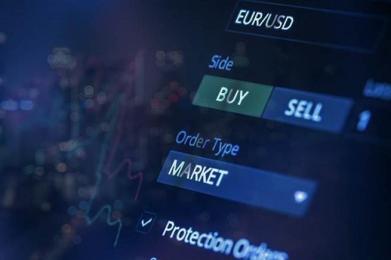Forex market is a vast and complex financial market that involves the buying and selling of currencies from around the world. As such, it has its own set of terminologies that traders and investors must understand to navigate the market effectively. In today’s article, We will discuss with you those common Terminologies (Terms) which use in this popular Market. Let’s Begin with:
Leverage- Forex market includes “leverage,” which refers to the use of borrowed funds to increase the potential return on an investment, and “margin,” which is the amount of money required to open and maintain a position in the market. Understanding these and other forex terminologies is essential for anyone looking to succeed in this dynamic and ever-changing market.

Base Currency and Counter Currency -The forex market is a global marketplace where currencies are traded. In forex trading, there are two currencies involved in every transaction: the base currency and the counter currency. The base currency is the first currency listed in a currency pair, while the counter currency is the second currency listed. The base currency is considered the “primary” currency in a currency pair, and is used to determine the value of the counter currency. For example, in the currency pair USD/EUR, the base currency is the US dollar, and the counter currency is the euro.
Long and Short Position- The forex market is a complex and dynamic environment that involves the buying and selling of currencies from around the world. One of the key concepts in forex trading is long and short positions. A long position is when a trader buys a currency in the hopes that it will increase in value over time. Conversely, a short position is when a trader sells a currency, expecting it to decrease in value. Traders use long and short positions to take advantage of market trends and make profits. For example, if a trader believes that the US dollar will increase in value compared to the euro, they may take a long position in the USD/EUR currency pair. On the other hand, if they believe the opposite, they may take a short position.
Pip- One of the most commonly used terms in the forex market is “pip,” which stands for “percentage in point.” It refers to the smallest unit of measurement in currency trading and is used to measure the change in value between two currencies. Another important term is “spread,” which refers to the difference between the bid price (the price at which a trader can sell a currency) and the ask price (the price at which a trader can buy a currency).
Market Trading Terms
Beyond Forex, the market is a multifaceted sphere full of endless terms that traders must be aware of in order to make the best trading moves possible. This is why, to help you get a better understanding of the many concepts and technical terms, we’ve compiled a summary of the main market terms to keep in mind below:
Bear Market – A market on the decline, where traders expect prices to fall, which indicates there is going to be more short selling (or traders ‘going short’).
Bull Market – A market that is appreciating, where traders are eager to increase their long trading activity (also known as ‘going long’). For example, in 2022, NVIDIA entered a bullish market and its value went up, which urged many traders to invest in its shares.
Broker – An intermediary for traders and financial institutions to go through for executing transactions.
Federal Reserve – The official centralised bank for the regulation of economic activity in the USA. Often abbreviated as the ‘Fed’. The Federal Reserve aims to control inflation by influencing interest rates. When inflation is too high, the Federal Reserve typically raises interest rates to slow the economy and bring inflation down.
GDP (Gross Domestic Product) – The total sum of the economic activity of a country and is reflective of the overall health of its economy.
Inflation – The rate of increase in the price of goods and services in a national/state economy. Inflation rates can affect Forex pairs and other traded assets by either lowering or heightening their value.
Foreign Exchange Volatility – Refers to the price fluctuations of a market. The bigger the price movements the more volatile a market is considered. In other words, it is a measure of how dramatic/unpredictable its price movement can be. This is generally an indicator of how risky a currency pair can be to trade.
Interest Rates – The rates of interest charged for lending money from a bank or credit provider. Generally, central banks control the levels of interest rates, which is critical to the strength or weakness of a currency. Interest rates can affect currencies’ value in that, for instance, the US dollar tends to appreciate due to increased interest rates, and a supply reduction by the Fed. Thus, Forex traders should be aware of how each country sets its interest rates when trading a certain currency pair as each currency has different interest rates set by different central banks.
This is who sets the interest rates for the most traded currencies:
The US dollar’s interest rate is determined by the Federal Funds rate.
The Euro is set by Euro Interbank Offered Rate (EURIBOR).
The GBP follows the Sterling Overnight Index Average (SONIA).
The CHF follows the Swiss Reference Rates (SARON).
The JPY follows the Tokyo Interbank Offered Rate (TIBOR).
